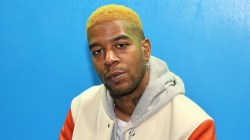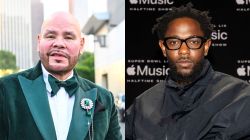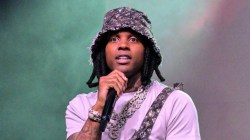Last Thursday, HipHopDX spoke with songwriter and producer Chris “Deep” Henderson. The Detroit-born artist first burst onto the music scene after producing R&B singer Case’s hit single “Happily Ever After” in 1999. Since then, Henderson has gone on to produce songs for a number of chart topping artists, including Jamie Foxx’s recent smash “Blame It” and Trey Songz’ “Be Where You Are.” Henderson spoke about how college life gave him the initial push towards becoming a record producer.
“I had originally gone [to Hampton University] as a physics major, and freshman year, even though they were probably putting on a front, a lot of the kids seemed like they knew exactly why they were there and what they were going to do,” he explained. “The fact that everybody around me seemed like they had it figured out made me really kind of search for what I really wanted to do instead of just going there, studying, making the grades and graduating…so when I really kind of took a look at myself, I realized that [music] was something that I really wanted to do…eventually, a friend of mine had a whole production company idea and sold me on how…I could turn a career out of [my passion].”
Yet Henderson isn’t simply a producer. Although he says he’s songwriter and producer by nature, Chris also runs his own production company, Deep Productions. Chris spoke about how trials and tribulations in the industry taught him how to manage his business as well as his music.
“First I was a songwriter, then I kind of figured out how to produce, and along the way I figured out how to run my own business,” explained Henderson. “I’m still learning in all those categories. [My] natural talent is the song writing and production. Everything else kind of developed as kind of a necessity because I’m kind of under the mind[set] that if I’m…trying to catch a cab down the street: if I walk in the direction…of where I’m going, if I miss a cab, I’m still getting closer and closer to that point. That’s kind of how I ended up running the business…I had to kind of figure [the business] out for myself because it just wasn’t being done trusting [others].”
Henderson also discussed his the evolution of his production style. Although he first started using traditional production gear like MPCs, he says he now uses primarily computer-based software. He also explained how “Blame It” first came about after he started working with Reason software.
“You do need to know your tools if you want to do anything special [or] out of the norm,” noted Henderson. “A lot of times, I have the beat imagined and thought out before I sit down to do it. A lot of people I know go through sounds in their keyboards and tinker around with ideas, and I’m not much of a tinkerer like that. I usually sit down knowing exactly what I’m trying to find, and so then the process is in trying to find that sound.”

AD LOADING...
He later added, “When I did “Happily Ever After” [with Case in 1999], I was largely MPC-based with some external keyboards. A lot of the guys now, I noticed, were doing computer-based production. So when I first moved to Atlanta in 2006, I had stopped producing for a while and kind of studio hopped to kind of figure out how a lot of the younger guys were doing it…so when I started back producing in ’07…I just bought all new stuff that I [could] re-learn how to use it. I figured that in relearning how to use it, it would give me that same hunger to figure it out…in fact, [Jamie Foxx’s] “Blame It” track was the first one I did. A friend of mine taught me how to use Reason, and when I was just kind of tinkering with it…[most of] the “Blame It” beat just went and came out.”
Chris also discussed his upcoming work on R. Kelly’s untitled album, due out this October 13 on Jive Records. He described how one of his two songs featured on the album, “Elsewhere,” first caught R. Kelly’s attention.
“At one point, [R. Kelly] had the ‘Blame It’ track…before Jamie Foxx did,” he explained. “He decided not to use the song…[but] that’s what got me in the door to ‘Hey, what else do you have?’ So when I was called into the meeting, I thought it just was going to be a meeting with R. Kelly…so I came [into the meeting], and [there were] a bunch of other producers there…it was funny because once I had got my seat…I would see other people walk in the room after me and they had the same shocked look on their face, like ‘I’m about to have a meet- aw, damn!’…and judging from [which other producers were] in the lobby…the first thing I took out…[were] these up-tempo, club banger tracks. I did that for a while…[but] then I played one that I was almost finished with, and when I played [that track], R. Kelly pulled his recorder out and started singing into it, like he was starting to vibe to it…so I was like ‘Shoot, if he’s open to listening to unfinished stuff, I’ve got one more for you. It’s just piano and me singing this idea, but if you like it, I’ll go and produce it’…I played him [what would become the beat to] ‘Elsewhere’…and he was in shades and a hat the whole time, kind of just playing it cool…but mid-way through ‘Elsewhere,’ his shades came off, he stood up and just started staring at the speakers, so I knew that I had him.”



